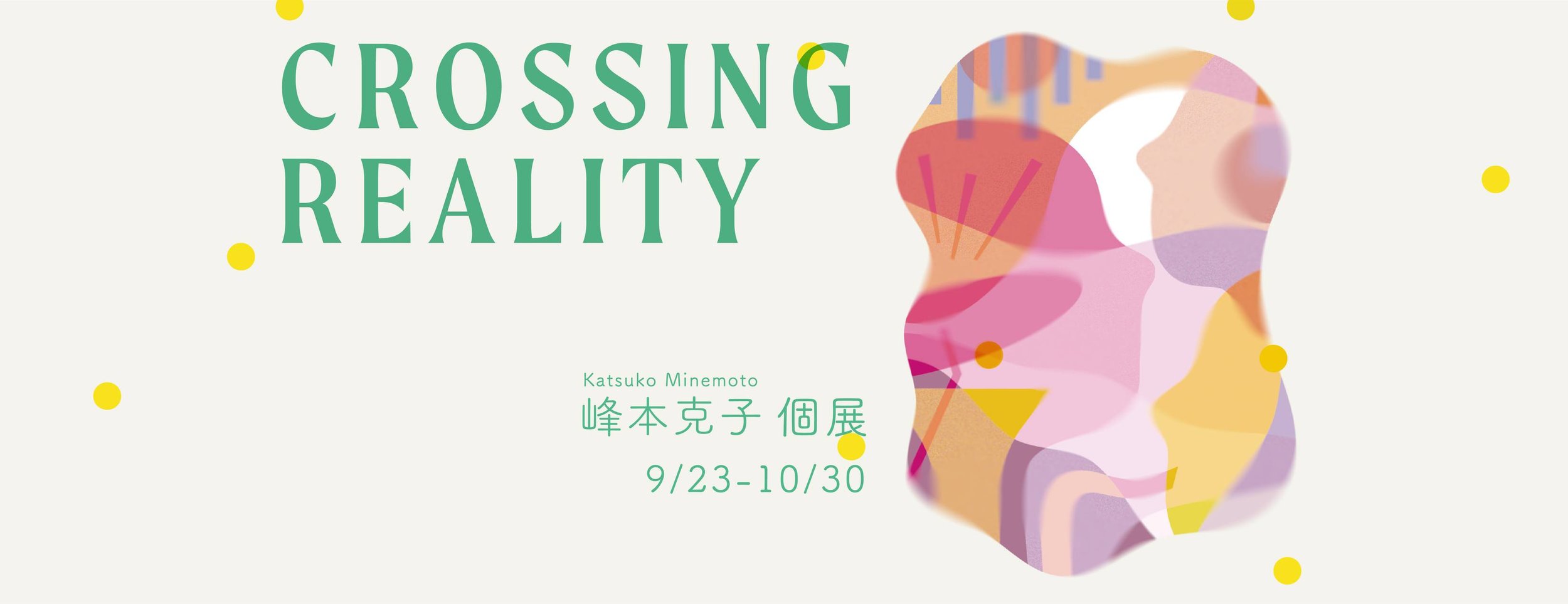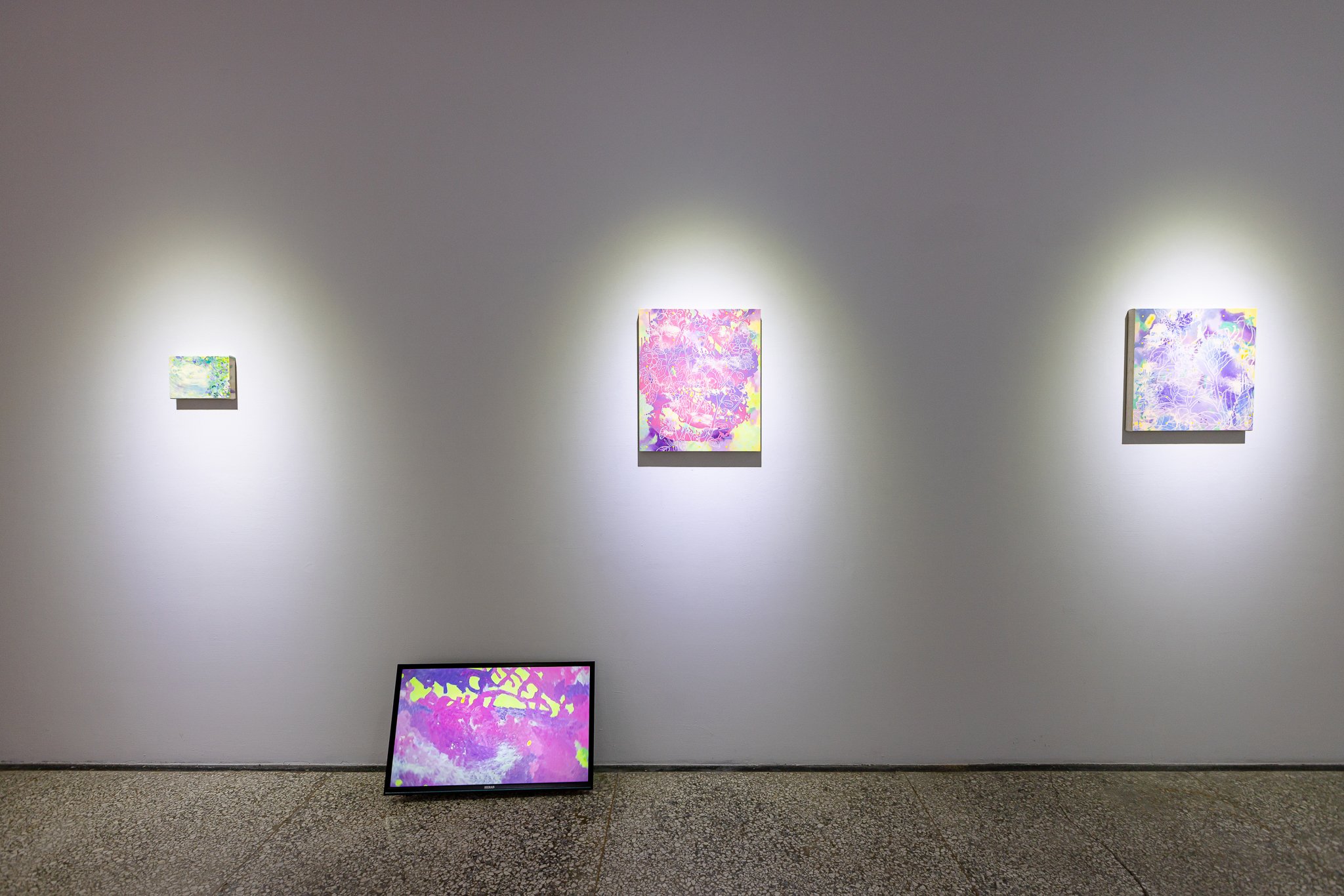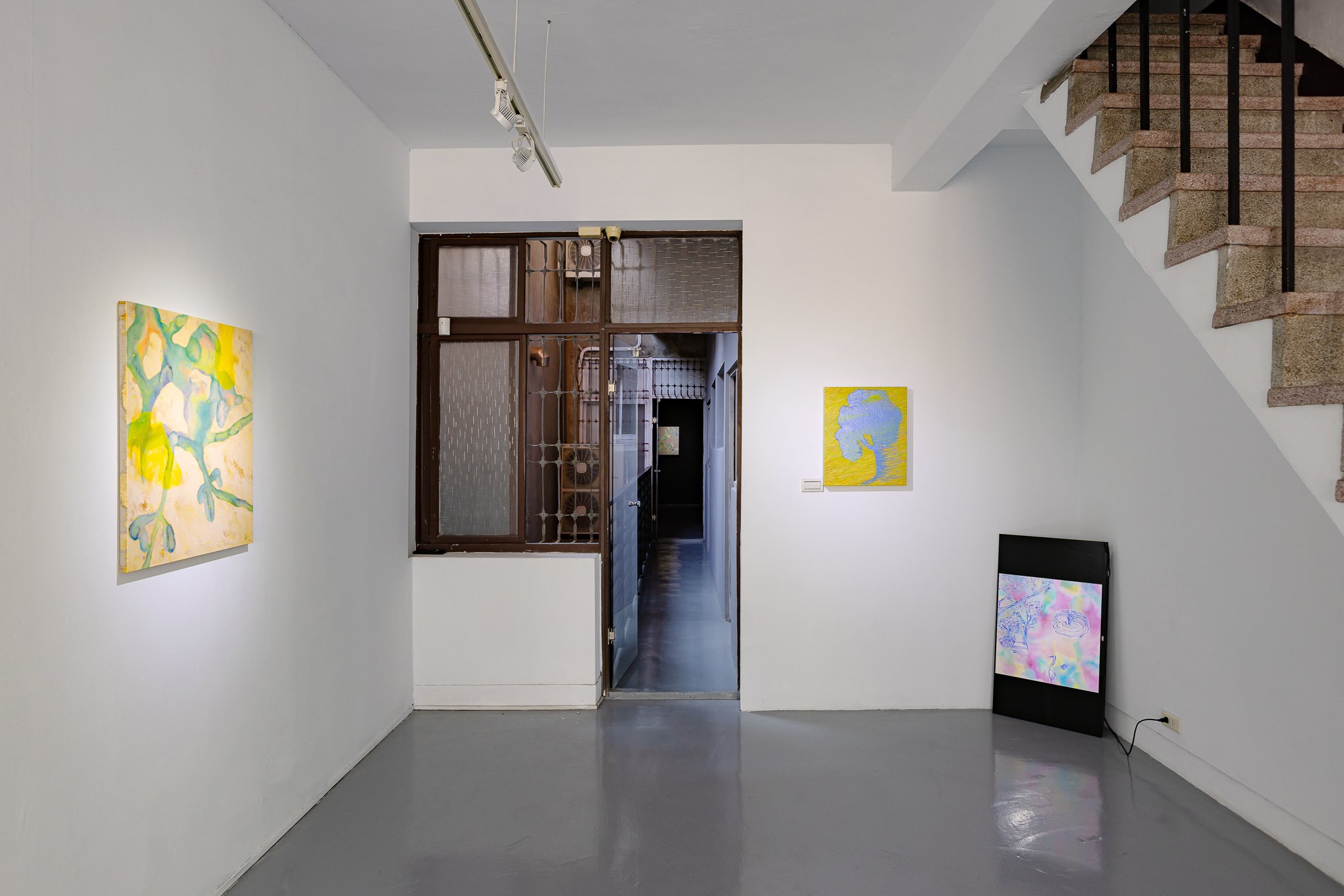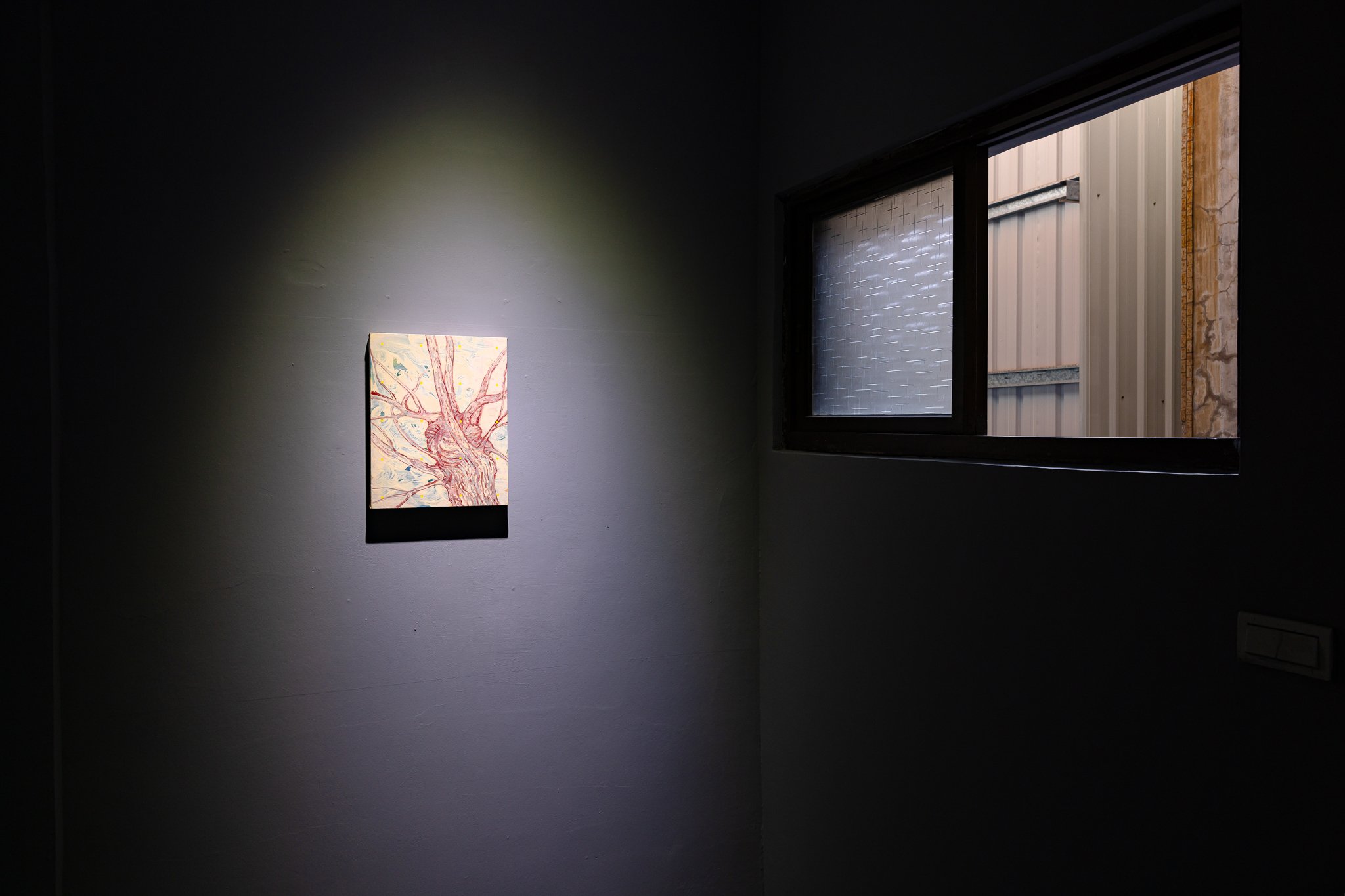
A Gaze to the Common “Life” -- On the Occasion of Minemoto’s Solo Show in Taiwan
Mio TOMIYORI (Art Critic)
First of all, I am delighted that Minemoto's exhibition in Taiwan be realized again after two years. Since the first show carried out in the midst of COVID-19 crisis under strict isolation policy, which prevented the artist from being present at gallery, it is fortunate that the people in Taiwan have the second opportunity to feel free to visit her exhibition. Also, it is surprising that the artist has been all the more energetic in the volume of her activities and the development of her works even during the mature phase of her career, to the extent that it can be said she is at the second peak of her career.
As I already wrote about the trajectory of Minemoto's work before, this time I would like to start with referring to her personality in daily life, which I believe is the quickest way to understand the world represented in her work.
My relationship with the artist dates back to my university days. The "standard course" of my visiting her atelier includes looking at her works in the room filled with the smell of oil paints, eating her colorful and nutritious home-cooked meals (you should know her meals are plentiful and extremely tasty,) having a lot of talk, before returning home with a heavy stomach and some warmth in my heart. I wonder her atmosphere such as her smile and the way she talks seems to generate some good flow of energy like the calm but cheerful brilliance of sunlight, making me feel at ease from the bottom of my heart.
I used the word "the sunlight" earlier, perhaps because the yellow dots that always appear in Minemoto’s works evoked that image. When she completes the work, she never forgets to filter the whole canvas with the grid of yellow dots, which resemble particles of light, making an essential component of her paintings. This “ritual” of filtering with dots is a way to create distance between herself and the world, according to the artist. However, this distancing does not mean that she is looking at the world in a cold, indifferent manner from an alien perspective. Her gaze rather envelops the everyday world, making it a part of her, as if a sunlight is shining down on every little life.
Then let us turn our attention to the motifs covered with this yellow layer. You will see Minemoto’s choice of motifs indicates that they are picked up by her synchronization with the common "life” she encounters in everyday life.
It is particularly remarkable in her most recent works that she is slowly shifting the style of paintings from the abstract to the figurative again (although her creation is not necessarily bound by the dichotomy of "figurative" and "abstract").
As her recent abstract works, the series Fever Plants is representative. In this series, the organic plant-like shapes stretch across the entire canvas. The compositions look as if her energy just occasionally passed through the canvas, rather than she intentionally composed it. This series of works can be positioned as a new abstract expression that she has arrived at after minimalist style at her debut and figurative expression from the mid 90s.
Interestingly, as mentioned earlier, her most recent works are shifting to the figuration again this year. The most important motif is a tree. Her focus on this motif has its direct root in her having raised an opposition movement against the felling of a 100-year-old camphor tree in her hometown. In parallel with this movement, the expressions of plants which was formerly abstract have been replaced by figurative representations of trees with distinguishable trunks, branches, or leaves. The images of trees in her works sometimes extend its silhouette across the entire picture, and at other times float on an illusory surface of marbled colors, which appear to emerge from her uncertain memory rather than exist as a solid substance.
As the artist refers to her current expression as "having opened a new door," it seems that her energy, which had been emanating formlessly and freely in the Fever Plant series, has been internalized and connected to the concrete figure of trees. It can be also said that her energy tends to be connected to something familiar in her daily life, including trees. To implicate this, her trees sometimes appear on canvas with other motifs such as a fountain and a river, all of which can be seen in the park where she walks on a daily basis.
It is after picking up these motifs from her preconsciousness that she will finally finish the work through the ritual of yellow dots for detaching outpouring of these energies from herself. In this case, her yellow filter functions as distancing herself not only from the world, but also from the piece of art she created. In other words, her ritual may be a kind of statement to stop intervening in the work as an "author" and to send it over to the world as an individual.
Although it is not uncommon to discuss the relationship between an artist and a piece of art as traces of artists’ act, Minemoto is completely irrelevant of paternalistic authority of the "author" in the art history, but closer to the "mother” of the work. Considering that, it is symbolic that she herself compares the yellow dots to "the heartbeat of a pregnant baby.” For the artist, her works might be like a child in her belly, a part of herself but separated as an individual, which is partly why her works, while synchronized with the art historical context, have a kind of freshness and universality that talks to the viewer's inner state free from any formulaic convention.
In the text for the last exhibition, I described Minemoto’s works as "affirmative" paintings. Intuitively, the way how she treats and accepts this world will evoke a kind of warmth like the sun, the same impression I always have when I meet her. I believe when the viewer is invited to look behind the yellow filter for entering her world, s/he might already become a child in the belly, wrapped in the yellow dots of her gaze.
I sincerely hope that this second solo show will provide an opportunity for the people of Taiwan to feel the energy of her gaze.
對於日常生活中的「生命」視角 - 在台灣舉辦個展
文/富依美音(藝評人)
峰本克子第二次個展在台灣。第一次是在疫情流行期間,當時隔離政策非常嚴格,藝術家本人也無法親自參與。然而,在這樣的環境下,台灣的人們早早地有機會親自接觸到藝術家的作品,這實在令人感到高興。同時,我們也不禁驚訝地看到,她正處於事業的成熟期,她的活動量以及作品的發展都在迅速增長,可以說是進入了第二個巔峰。
關於峰本藝術家的作品演變,上次的個展時我已經寫過一些,所以這次我想改變視角,從日常的藝術家談起。這是為了理解她的作品世界,最快的方式就是想像她那太陽般的性格。
我和藝術家的交流可以追溯到我的學生時代。我曾經訪問她的工作室,在那個充滿了油畫顏料氣味的房間中欣賞她的作品。之後,品嚐了她精心製作色彩、營養豐富的手工料理,我們還聊了很多,最後肚子都吃得圓圓的,這已經成為了我們的「慣例行程」(因為藝術家的手工料理非常美味,而且份量也很大)。訪問藝術家後,我的胃感到沉重,但奇怪的是,我的心情似乎變得輕鬆,壓力似乎被解除了。藝術家的笑容和談話方式似乎能給予我一種讓人感到安心的感覺,我不知怎麼的,覺得有一種良好的「氛圍」在流動。
剛才將藝術家比喻為「太陽」,或許是因為她的作品中總是有一些黃色的點狀元素,這可能讓人聯想到太陽的光芒和明亮。當她的作品完成時,她總是會像儀式一樣,最後使用黃色的點狀元素將整個作品覆蓋。這種像降下的光粒一樣的格子狀層是她作品中不可或缺的構成元素,也是她的標誌。
根據藝術家所說,這個「濾鏡」是一種與世界和自己保持距離的方法,可以說是一種像「結界」一樣的東西。透過這個「濾鏡」,她能夠保持一定的距離,遠離作品中描繪的世界。然而,這個「結界」並不代表她僅是旁觀,用陌生的視角看待世界。更準確地說,她的視角就像陽光灑落一樣,將日常世界包容在她的能量中,將其融入她的一部分。
那麼現在,讓我們轉向被包容在那個黃色色層中的作品。可以預見,她的作品與日常生活中的「生命」密切相關,似乎像是她自己的能量所呼喚的痕跡。特別在她最近的作品中,從上次個展的抽象風格再次回歸到具象風格是非常有趣的(儘管她並不一定受制於具象和抽象這兩種對立的概念)。
上一次的個展中,藝術家展示了抽象作品,其中包括了《発熱植物》系列。這個系列的畫布尺寸各異,但有機的植物形狀在畫面中自由地擴展,可以稱之為「無中心的畫作」。這種結構似乎不是在畫布上有意地繪畫出來的,而更像是她的能量偶然穿過畫布而來。這些作品是她在積極發表作品的初期,以原始的極簡主義風格為基礎,轉向具象表現之後,親近創作的表達方式。
然而,在這些抽象作品之後,今年初藝術家的作品再次充滿了具象的主題,特別是樹木的圖像。這背後有一個重大事件,那就是去年秋天,她在自己的家鄉參與了一項有關護林的運動,反對砍樹的行為,最終成功阻止了砍伐。這個運動與她的藝術創作息息相關,植物的表現開始轉向對樹幹、樹枝和葉子等具象的呈現。
像夢幻般的色彩,時而流轉,有時橫貫整個畫面,有時漂浮著的樹木圖像,似乎不是堅實的物質,更像是從她內心模糊「記憶」中浮現的形象。靠近樹木主題的地方,經常出現公園中的噴泉和河流等元素,這些元素可以在她經常散步的公園中找到。關於她目前的表達方式,藝術家表示感覺就像是「打開了一扇新的門」,似乎是她在《発熱植物》系列中散發的能量逐漸內化,與具體的樹木物質和相關的記憶相結合的結果。
正如上述,她的生命力和能量最終與日常生活中的身近事物有關,並被融入潛意識中。當這個潛意識的門通過藝術創作而悄然打開時,這些主題有時是抽象的,無形的,有時則清晰地呈現在畫布上。而這些能量的表達通過繪製黃色的點狀元素的「儀式」來實現,並成為新的「生命」,從她身上分離出來,成為獨立的個體。在這一刻,她的黃色濾鏡不僅表示與這個世界保持距離,也包括她自己與作品之間的距離。換句話說,這個濾鏡儀式不僅是她對這個世界保持距離的表現,還可能是一種表達,表示她放下了對作品的「作者」干預,將自己與作品分離開來的意圖。
她自己將作品中的黃色點狀元素比喻為「妊娠中的嬰兒心跳」是具有象徵意義的。她的作品雖然是她自己的一部分,但卻被視為一個獨立的個體,就像是一個在腹中的嬰兒一樣。
當然,有關作品和作者之間的關係,以及作品是否帶有作者的痕跡的討論在藝術界並不罕見。然而,在峰本的作品中,我們無法感受到所謂藝術史上的大寫「作者」那種具有父權權威性的存在。她更像是作品的「母親」。這也是為什麼儘管她的作品與藝術史的語境同步,但卻不受其約束,並因其新鮮感和普遍性而深植人心的原因。
當我在上一次展覽的文章中用「肯定之畫」來表達她的作品時,這種詞語或許有點直觀,但當我從她的作品中感受到對世界的處理方式和接納態度時,我會聯想到和我與她互動時的印象,都帶有一種太陽般的溫暖。
當我進入她的作品世界,被引領進入黃色的濾鏡深處,觀賞她的作品時,我也像是被黃色點狀元素的凝視所包圍,就像腹中的胎兒一樣。我希望這次的個展能讓台灣的人們感受到這種溫暖和能量,這樣的體驗就像太陽一樣,是一種特別的溫馨。









